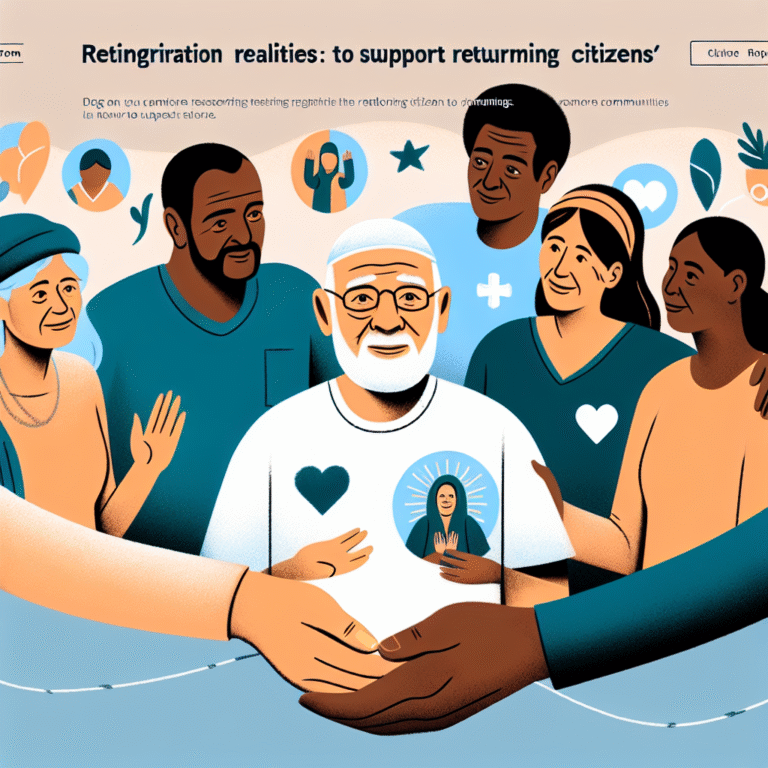
Introduction
Imagine this: you’ve just been prescribed a new medication for your chronic condition. With hope in your heart and a prescription in hand, you set out to reclaim your health. However, as the days pass, reality sets in. You forget a dose here and there, you struggle with side effects, and you question whether the medication is really making a difference. This scenario is all too common in the healthcare landscape. The Patient’s Journey: Navigating the Challenges of Medication Adherence is not just an essential aspect of patient care; it is a critical determinant of long-term health outcomes.
With nearly 50% of patients worldwide not taking their medications as prescribed, understanding the complexities surrounding medication adherence has never been more urgent. This article will explore the various stages of the patient’s journey, elucidate the challenges related to medication adherence, and provide unique insights, strategies, and support systems that can significantly improve adherence rates.
The Importance of Medication Adherence
Before delving into the specifics of the patient’s journey, it’s vital to understand the significance of adherence itself. Medication adherence refers to the extent to which patients follow the prescribed instructions for taking their medications. Non-adherence can lead to treatment failure, increased healthcare costs, and can ultimately result in poorer health outcomes, including hospitalizations and complications from chronic diseases.
Statistical Insights on Medication Non-Adherence
| Statistic | Value |
|---|---|
| Global Rate of Non-Adherence | ~50% |
| Annual Cost of Non-Adherence in the U.S. | $290 billion |
| Impact on Hospital Readmissions | ~10-25% |
These statistics underscore the urgency of examining The Patient’s Journey: Navigating the Challenges of Medication Adherence. The road to effective treatment is paved with obstacles that require attention, understanding, and proactive management.
Stages of the Patient’s Journey
1. Pre-Diagnosis Phase
The journey begins well before the diagnosis. Patients often exhibit behaviors shaped by their previous healthcare experiences, family histories, and individual beliefs about medications. Awareness of chronic conditions and preconceived notions can heavily influence their opening to treatment options.
Real-World Application: Case Study – Sarah’s Hesitation
Sarah, a 45-year-old woman, recalls her mother’s adverse effects from medications, leading her to enter her doctor’s office apprehensive about prescribed treatments. Misconceptions about side effects hindered her readiness to embrace medications that could improve her well-being.
Analysis: Sarah’s experience highlights the need for tailored education and empathetic communication during the pre-diagnosis phase.
2. Diagnosis and Prescription
Upon receiving a diagnosis, patients are met with a deluge of new information. It’s crucial for healthcare providers to establish a trusting relationship so patients feel comfortable asking questions. The chaotic moment of getting diagnosed can lead to confusion and overwhelm.
Key Considerations:
- Clarity of medication instructions
- Timing and dosage concerns
- Understanding the purpose of medications
Visual Aid: Medication Goals
| Goal | Strategy |
|---|---|
| Increase understanding | Use teach-back methods |
| Address fears | Allow for open dialogue |
| Simplify regimens | Consider combination therapies |
3. Initial Therapy
Once treatment begins, the reality of taking medications sets in. Various factors can influence adherence during this stage, including side effects, complicated dosing schedules, and a lack of perceived benefit.
Real-World Application: Case Study – John’s Journey
John, diagnosed with hypertension, started on two medications. Five days in, he experienced dizziness, which led him to skip doses, fearing more side effects. He appreciated his doctor’s guidance but felt unsupported after the quick ten-minute appointment.
Analysis: John’s experience illustrates the importance of follow-ups and ongoing support to encourage adherence and monitor side effects.
4. Adherence Challenges
As patients progress through treatment, the challenges may compound. Factors can broadly be categorized into:
- Health System Factors: Complexity of medication regimens, low healthcare access.
- Patient Factors: Personal beliefs, side effects, and forgetfulness.
- Social Factors: Lack of support systems and socioeconomic barriers.
Visual Aid: Barriers to Adherence
| Barrier | Impact |
|---|---|
| Complexity of regimen | Increases the likelihood of non-adherence |
| Economic burden | High cost leads to skipping doses |
| Lack of social support | Decreases motivation to adhere |
5. Long-term Management
Patients who manage to navigate these challenges successfully may still face barriers to long-term adherence. The continuity of care and the gradual transition from acute treatment to long-term management are pivotal.
Real-World Application: Case Study – Maria’s Triumph
Maria, living with diabetes for ten years, struggled with the monotony of her regimen. After attending a patient support group, she found renewed motivation and learned practical strategies for managing her condition, enhancing her long-term adherence.
Analysis: Maria’s testimony reinforces the value of community-based support and ongoing learning in sustaining adherence.
Strategies to Improve Medication Adherence
1. Patient Education
Knowledge is power. Empowering patients through comprehensive education about their medications can enhance understanding and foster commitment. Interactive tools, such as apps and educational videos, can bridge the knowledge gap.
2. Simplification of Regimens
Healthcare providers should strive to minimize the complexity of medication regimens. This includes considering once-daily dosing, combination drugs, and the use of medication synchronization.
3. Utilizing Technology
Innovative solutions such as pill organizers, mobile alerts, and telehealth appointments can assist patients in adhering to their medication schedules.
Visual Aid: Technology-Based Tools
| Tool | Benefit |
|---|---|
| Medication Reminders | Reduces forgetfulness |
| Apps for Tracking | Provides real-time feedback |
| E-Prescribing | Simplifies refill processes |
4. Support Networks
Creating a robust support system is essential. Whether through family, community groups, or healthcare professionals, having someone to share the journey can make medication adherence feel less isolating.
5. Regular Monitoring and Follow-up
Regular follow-ups allow healthcare providers to assess adherence, address concerns, and adjust treatment plans as necessary.
Conclusion
The Patient’s Journey: Navigating the Challenges of Medication Adherence is a multifaceted endeavor that requires collaborative efforts from patients, healthcare providers, and support systems. By understanding the various stages of this journey and employing innovative strategies to tackle the challenges of medication adherence, we can significantly enhance treatment outcomes and improve the quality of life for millions globally.
As we move forward, let us inspire a culture of adherence that goes beyond mere compliance to encompass empowerment, education, and empathy. Each step taken toward overcoming barriers is indeed a step toward a healthier tomorrow.
FAQs
1. What is medication adherence?
Medication adherence refers to how well a patient follows their prescribed medication regimen, including timing, dosage, and frequency.
2. Why is medication adherence important?
Poor medication adherence can lead to treatment failure, increased healthcare costs, hospitalizations, and worsened health conditions.
3. What are some common barriers to medication adherence?
Barriers include side effects, complicated dosing schedules, lack of support, forgetfulness, economic hardship, and personal beliefs about medication.
4. How can technology improve medication adherence?
Technology can help patients remember their dosing schedules through alerts, facilitate tracking of medications, and provide educational resources for better understanding.
5. What role does healthcare provider communication play in adherence?
Effective communication fosters trust and understanding, allowing patients to feel comfortable discussing concerns and asking questions, ultimately improving adherence.
By addressing these questions and providing actionable insights, we actively contribute to a culture of support for patients navigating the complexities of medication adherence.


















